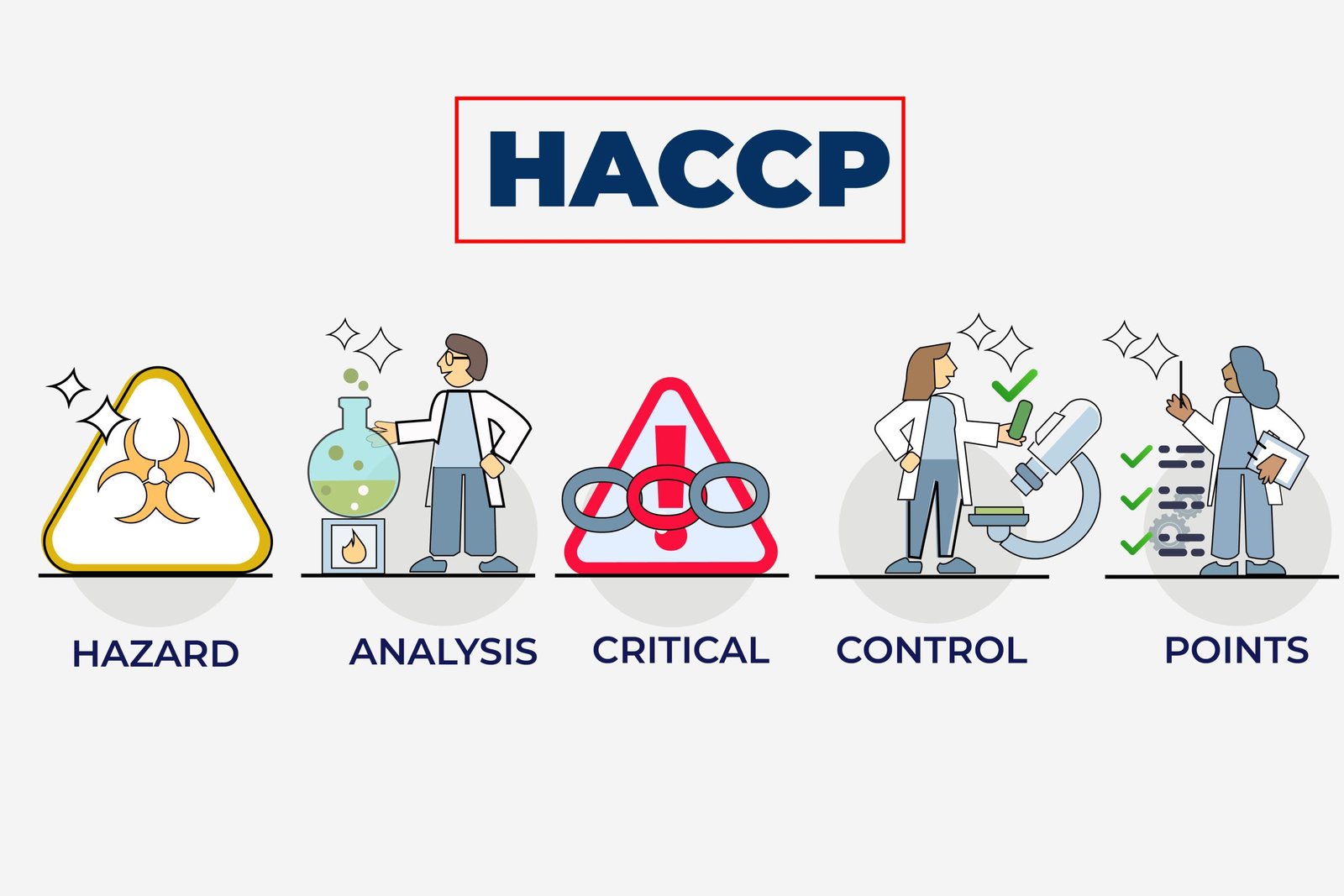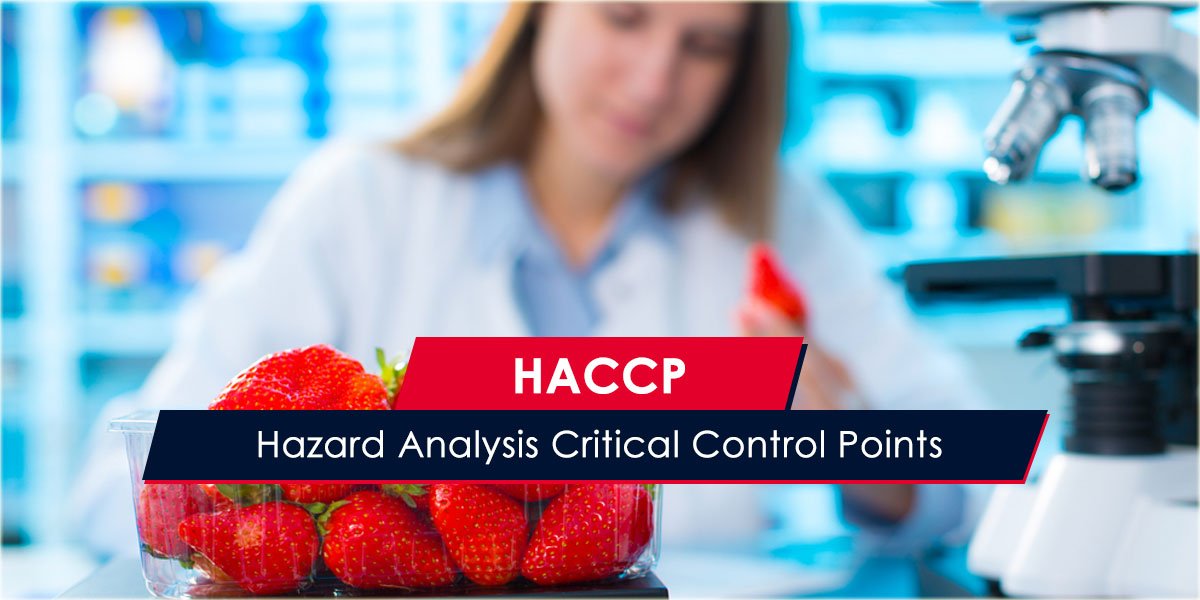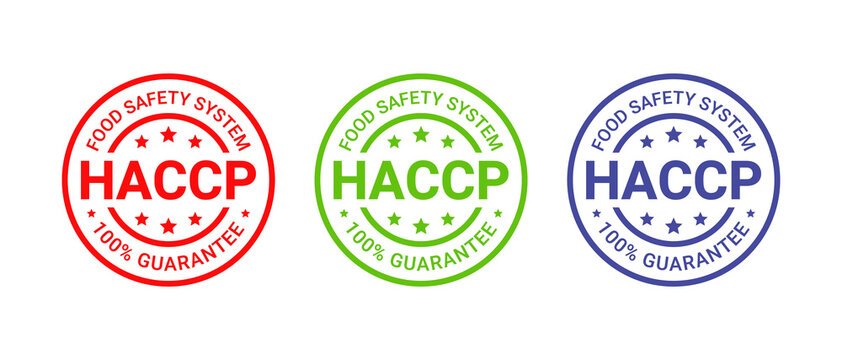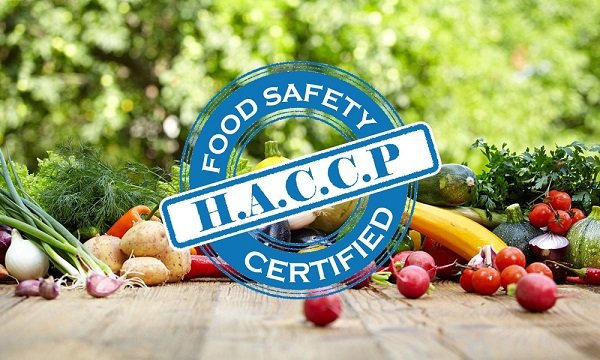In the quest for optimal health and wellness, consumers increasingly turn to dietary supplements, trusting in their safety and efficacy. However, the journey from raw material to finished product is fraught with potential hazards, from contamination to mislabeling, posing significant risks to consumer health. This is where the Hazard Analysis and Critical Control Point (HACCP) system plays a pivotal role. Originally developed to ensure the safety of food for astronauts, HACCP has evolved into a cornerstone of food and supplement safety worldwide, providing a systematic framework to identify, evaluate, and control hazards throughout the production process.


1. HACCP: Definition and Background
1.1 Defining HACCP
HACCP stands for Hazard Analysis and Critical Control Point, a preventive approach to food safety that identifies physical, chemical, and biological hazards in production processes that can cause the finished product to be unsafe. It designs measurements to reduce these risks to a safe level. In essence, HACCP is about controlling what can go wrong in the food production cycle to ensure the safety of the end product.
1.2 Historical Context
The genesis of HACCP can be traced back to the 1960s, during the collaborative effort between the Pillsbury Company, NASA, and the US Army Laboratories to ensure the safety of food for space missions. The traditional end-product testing methods were deemed inadequate for the zero-defects required in space food. Thus, HACCP was born out of the need for a new, more effective approach to food safety, focusing on identifying and preventing hazards at every step of the manufacturing process rather than detecting problems in the finished product.
1.3 Global Application and Importance
Over the decades, HACCP has transcended its aerospace origins, becoming the global standard for food safety management. Its principles have been universally recognized and adopted by food and supplement manufacturers, regulatory agencies, and international bodies such as the Codex Alimentarius Commission. The adoption of HACCP reflects a paradigm shift in the food industry—from a reactive stance on food safety to a proactive and preventive approach. In the supplements industry, this shift is critical given the complex nature of supplement production and the diverse sources of raw materials.
1.4 Role in Food Safety Management
HACCP's role in food safety management is multifaceted. It not only serves as a tool for risk assessment and management but also as a framework for regulatory compliance and quality assurance. By identifying critical control points (CCPs) in the production process where hazards can be effectively controlled or eliminated, HACCP helps manufacturers ensure the safety and integrity of their products. This systematic approach not only protects consumers but also strengthens the trust and credibility of brands in the competitive market.
In summary, HACCP's introduction marked a significant milestone in the evolution of food safety, offering a scientific, systematic methodology that is preventative rather than reactive. Its principles, grounded in rigorous analysis and continuous monitoring, have set the standard for food and supplement safety worldwide, reflecting a universal commitment to safeguarding public health.


2. HACCP's Seven Principles
Delving into the heart of the Hazard Analysis and Critical Control Point (HACCP) system, we uncover its foundational elements: the seven principles. These principles serve as the blueprint for implementing HACCP effectively, ensuring food and supplement safety from production to consumption. Their application within the dietary supplement industry is not only a testament to their versatility but also to their indispensable role in safeguarding public health.
Principle 1: Conduct a Hazard Analysis
The initial step involves a thorough analysis to identify potential hazards that could affect the safety of the final product. In the context of supplements, this includes biological, chemical, and physical hazards. Biological hazards encompass pathogens like bacteria and viruses; chemical hazards cover contaminants and toxins, while physical hazards can include foreign objects like metal shards or glass. The goal is to meticulously assess each stage of the production process, from raw material sourcing to final packaging, to pinpoint where these hazards could arise.
Principle 2: Determine the Critical Control Points (CCPs)
Critical control points are stages in the process where control can be applied to prevent, eliminate, or reduce a food safety hazard to acceptable levels. In supplement manufacturing, CCPs could include steps like sterilization, mixing, encapsulation, and packaging. Identifying these points is crucial for focusing efforts on the most critical areas that ensure product safety.
Principle 3: Establish Critical Limits
For each CCP identified, a critical limit must be established. These are the maximum or minimum values to which a physical, biological, or chemical hazard must be controlled at a CCP to prevent, eliminate, or reduce to an acceptable level. In supplements, this could relate to temperature controls during sterilization, pH levels during mixing, or purity levels for raw materials. Setting these limits is essential for defining the boundaries of safe production.
Principle 4: Establish Monitoring Procedures
Effective monitoring of CCPs is vital to ensure that each is under control. This involves determining the best method for monitoring, along with the frequency that ensures timely information on the process's safety. For supplements, this might involve routine microbial testing, pH measurements, or visual inspections of packaging integrity. Monitoring acts as the eyes and ears of the HACCP system, ensuring that the process remains within critical limits.
Principle 5: Establish Corrective Actions
When monitoring indicates a deviation from an established critical limit, corrective actions must be predefined to ensure no unsafe product is released. These actions depend on the nature of the hazard and the point in the process. For example, if a batch of raw material fails purity testing, a corrective action could involve rejecting the batch, retesting, or additional purification steps.
Principle 6: Establish Verification Procedures
Verification involves activities, other than monitoring, that determine the validity of the HACCP plan and that the system is operating according to the plan. This can include spot-checking, validation of the CCPs, critical limits, and their effectiveness in controlling hazards. In the supplement industry, verification might involve auditing suppliers, conducting surprise internal audits, or engaging third-party labs for product testing.
Principle 7: Establish Record-Keeping and Documentation Procedures
Maintaining detailed records is crucial for the efficacy and integrity of the HACCP system. Documentation provides the backbone for traceability and accountability throughout the production process. In the context of supplements, this could include records of hazard analyses, CCP monitoring activities, corrective actions taken, and verification activities. These documents not only ensure compliance with regulatory requirements but also serve as a historical account of safety efforts, essential for continuous improvement and in the event of an audit or investigation.
The diligent application of these seven principles forms the bedrock of HACCP's approach to food and supplement safety. By systematically identifying, evaluating, and controlling hazards, the HACCP system empowers manufacturers to ensure the safety and integrity of their products, thereby protecting consumers and bolstering confidence in the dietary supplement market.
3. Tailoring HACCP for the Supplement Industry
3.1 Identifying Hazards
The first step in applying HACCP to supplements involves a comprehensive hazard analysis. This analysis must consider the entire supply chain, from the sourcing of raw materials to the manufacturing, packaging, and distribution of the finished product. Potential hazards in supplements could include microbial contamination, pesticide residues, heavy metals, adulteration with pharmaceuticals, and incorrect concentrations of active ingredients.
A.Critical Control Points in Supplements
Determining CCPs in the supplement industry requires a detailed understanding of the manufacturing process. For example, the extraction process for herbal supplements may be a CCP if there's a risk of solvent residue exceeding safe levels. Similarly, for probiotic supplements, fermentation and freeze-drying processes are critical for ensuring the viability and safety of the microbial strains.
B.Setting Critical Limits and Monitoring
Critical limits must be scientifically based. For instance, the maximum allowable limits for microbial contamination, heavy metals, and other potential contaminants are often dictated by regulatory standards. Monitoring at these CCPs might involve lab testing for contaminants, checking temperature and humidity controls during storage, or verifying the accuracy of ingredient additions during formulation.
C.Corrective Actions and Verification
In the event of a deviation from critical limits, predefined corrective actions are essential. This might involve discarding a contaminated batch, reprocessing, or additional testing. Verification in the supplement industry often involves third-party lab testing to validate the effectiveness of the HACCP plan and ensure that all products meet safety and quality standards.
3.2 Challenges and Considerations
Implementing HACCP in the supplement industry comes with its own set of challenges. The complexity of dietary supplement formulations, the variability of natural ingredients, and the evolving regulatory landscape require manufacturers to be vigilant and adaptive. Ensuring the reliability of supply chains, particularly for ingredients sourced from diverse geographical locations, adds another layer of complexity to maintaining HACCP standards.
3.3 Regulatory Compliance
In many jurisdictions, adherence to HACCP principles is not just a matter of best practice but a regulatory requirement for dietary supplement manufacturers. For example, the U.S. Food and Drug Administration (FDA) mandates compliance with Good Manufacturing Practices (GMPs), which encompass many HACCP principles, for dietary supplements to ensure their identity, purity, strength, and composition.
3.4 Beyond Compliance: Consumer Trust and Market Advantage
While regulatory compliance is a key driver for the adoption of HACCP in the supplement industry, the benefits extend far beyond meeting legal requirements. A robust HACCP plan can significantly enhance consumer trust in a brand, given the growing consumer awareness and demand for safe, high-quality supplements. Furthermore, in a competitive market, a strong commitment to safety and quality can serve as a key differentiator for supplement brands, potentially opening up new markets and opportunities for growth.
In conclusion, the application of HACCP in the dietary supplement industry is a comprehensive approach that addresses the unique challenges of supplement production. By systematically identifying and controlling potential hazards, supplement manufacturers can ensure the safety and efficacy of their products, fulfilling their obligation to protect public health and building a strong foundation of consumer trust and brand integrity.


4. Steps for Implementing HACCP in the Supplement Industry
Implementing the Hazard Analysis and Critical Control Point (HACCP) system is a methodical process that requires careful planning, execution, and maintenance. For the dietary supplement industry, where the stakes for safety and quality are high, a well-structured HACCP plan is not just a regulatory requirement but a critical component of operational excellence. The following steps provide a roadmap for the effective implementation of HACCP in supplement manufacturing:
Step 1: Assemble the HACCP Team
The first step involves assembling a multidisciplinary team with diverse expertise in various aspects of supplement production, including quality assurance, production, engineering, and food microbiology. This team is responsible for developing, implementing, and maintaining the HACCP plan. It's essential that the team members have a deep understanding of the product, the process, and potential hazards.
Step 2: Describe the Product and Its Distribution
A clear understanding of the supplement product, its intended use, and how it will be distributed is crucial. This includes detailing the product's composition, processing, packaging, storage conditions, and instructions for use. This information helps in identifying potential hazards associated with the product.
Step 3: Construct a Flow Diagram and Verify Its Accuracy
Creating a flow diagram that outlines every step of the manufacturing process, from receiving raw materials to shipping the finished product, is essential. This visual representation helps identify potential points where hazards can be introduced, controlled, or enhanced. It's important that the HACCP team verifies the accuracy of this flow diagram by walking through the production process to ensure that it reflects reality.
Step 4: Conduct a Hazard Analysis
This critical step involves systematically identifying potential hazards that could occur at each stage of the process. The team must consider all types of hazards—biological, chemical, and physical. For each hazard, the team evaluates the likelihood of occurrence and the severity of its impact on product safety, leading to a prioritization of risks and identification of measures to control them.
Step 5: Identify Critical Control Points (CCPs)
Based on the hazard analysis, the team identifies points in the process where control can be applied to prevent, eliminate, or reduce hazards to acceptable levels. These CCPs are the steps where critical limits will be established and monitored to ensure control of the process.
Step 6: Establish Critical Limits for Each CCP
For every CCP identified, the team must establish critical limits that must be met to ensure each hazard is controlled. These limits are often based on scientific literature, regulatory standards, or expert consensus. They could include temperature ranges, pH levels, time requirements, or concentration limits for microbial or chemical contaminants.
Step 7: Establish Monitoring Procedures
Effective monitoring of CCPs is vital to ensure the process remains within the critical limits. The HACCP team must determine the best methods for monitoring, which could include measurements, observations, or tests, and decide on the frequency of monitoring to provide timely information on the process.
Step 8: Establish Corrective Actions
When monitoring indicates a deviation from an established critical limit, corrective actions must be taken. The HACCP team needs to define these actions in advance, including identifying the cause of the deviation, correcting it, and taking steps to prevent recurrence. Documentation of corrective actions is essential for traceability and continuous improvement.
Step 9: Establish Verification Procedures
Verification activities ensure that the HACCP plan is effective and being followed as designed. This could involve additional testing, validation of monitoring equipment, or periodic auditing of the HACCP system. Verification helps to confirm that the controls are adequate to manage the hazards.
Step 10: Establish Record-Keeping and Documentation Procedures
Maintaining comprehensive records is crucial for the success of the HACCP plan. This includes documentation of the hazard analysis, CCPs, critical limits, monitoring activities, corrective actions taken, verification activities, and any modifications to the HACCP plan. These records not only provide evidence of compliance but also serve as a valuable tool for assessing the effectiveness of the food safety system and for training new employees.
Implementing HACCP in the supplement industry requires a systematic approach, commitment from management, and ongoing effort from the entire production team. By rigorously following these steps, supplement manufacturers can ensure the safety and quality of their products, thereby protecting consumers and building trust in their brand.


5. Identifying HACCP Certified Products
For consumers, the assurance of safety and quality in dietary supplements is paramount. Recognizing products that adhere to the rigorous standards of the Hazard Analysis and Critical Control Point (HACCP) system can provide peace of mind and confidence in the choices they make. Understanding how to identify HACCP certified products is an essential skill for informed decision-making in the marketplace.
5.1 Look for HACCP Certifications and Seals
Many products that have been produced in facilities certified by HACCP standards will carry a certification seal or statement on their packaging. This seal is an indication that the manufacturer has undergone a thorough third-party assessment of their production processes, ensuring compliance with HACCP principles. However, it's important to note that the presence of a seal alone does not guarantee safety; it indicates adherence to a systematic approach to hazard control.
5.2 Check for Accreditation Details
Reputable HACCP certifications are typically awarded by accredited third-party organizations. Consumers should look for details of the accreditation on the product label or the manufacturer's website. This might include the name of the certifying body and the specific standards to which the product has been certified. Recognized certifying bodies often have their own marks of certification that can be verified through their official websites.
5.3 Review Product Labeling and Documentation
Product labels and accompanying documentation can provide additional insights into the safety protocols followed in the manufacturing process. Manufacturers committed to transparency might include information about their HACCP compliance, quality testing results, or other safety measures directly on their labels or in product information leaflets.
5.4 Inquire Directly with Manufacturers
For consumers seeking further assurance, directly contacting the manufacturer can be a valuable step. Reputable companies are usually willing to discuss their quality assurance processes and provide evidence of their HACCP compliance. This can include details about their hazard analysis, critical control points, and ongoing monitoring and verification activities.
5.5 Use Resources from Regulatory Authorities
Regulatory authorities in various jurisdictions often maintain databases or lists of certified facilities or products that comply with HACCP or similar food safety management systems. Accessing these resources can provide an additional layer of verification for consumers looking to ensure the products they choose meet high safety standards.
5.6 The Role of Consumer Awareness
While identifying HACCP certified products is a step towards ensuring safety, it's also essential for consumers to educate themselves about what HACCP certification entails. Understanding the principles of HACCP and the processes involved in certification can help consumers make more informed choices and recognize the significance of such certifications.
In conclusion, while HACCP certification is a strong indicator of a manufacturer's commitment to product safety, it is part of a broader context of quality assurance and regulatory compliance. Consumers should use a combination of certification seals, product labeling, manufacturer information, and regulatory resources to make informed decisions about the dietary supplements they choose. In doing so, they contribute to a demand for high safety standards, encouraging more manufacturers to adopt rigorous food safety management systems like HACCP.
6. Conclusion
In navigating the complexities of dietary supplement safety, the Hazard Analysis and Critical Control Point (HACCP) system stands as a beacon of reliability and assurance. Through its meticulous principles and rigorous application, HACCP not only safeguards public health but also elevates the standards of the supplement industry. For consumers, understanding and identifying HACCP-certified products is a crucial step toward making informed and safe choices. As we continue to prioritize health and wellness, the role of HACCP in ensuring the integrity and safety of dietary supplements remains indispensable.


